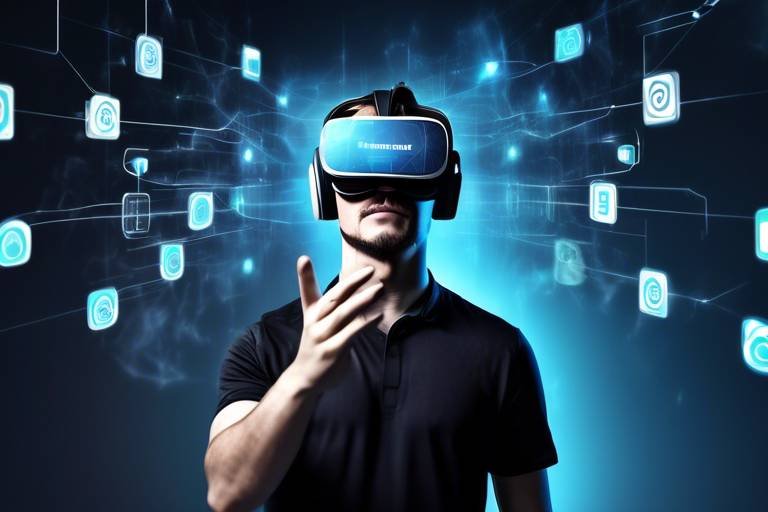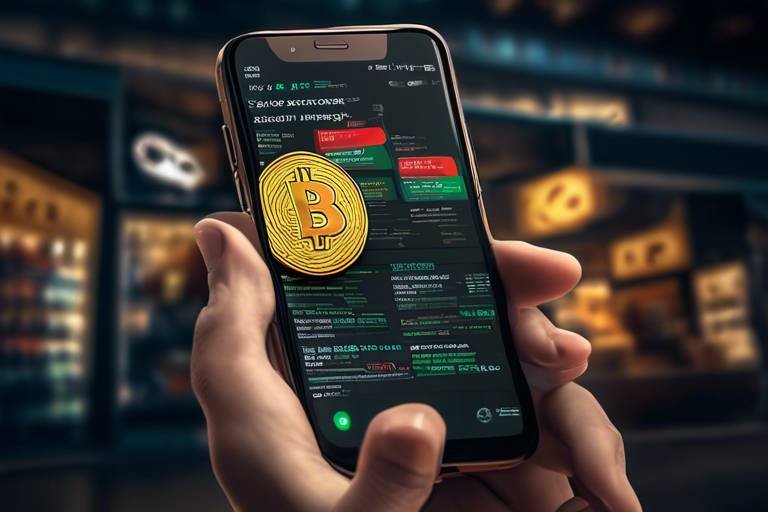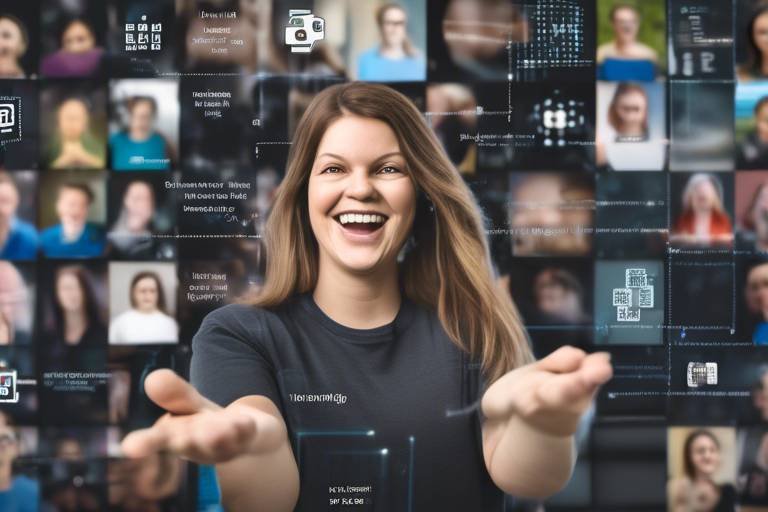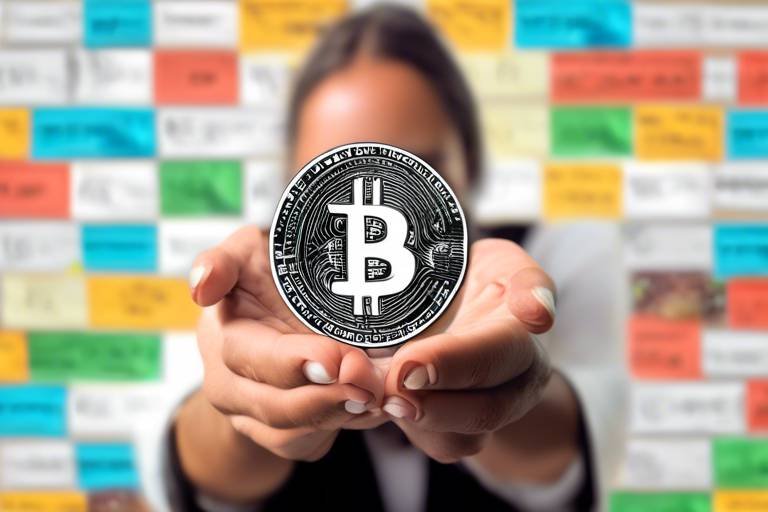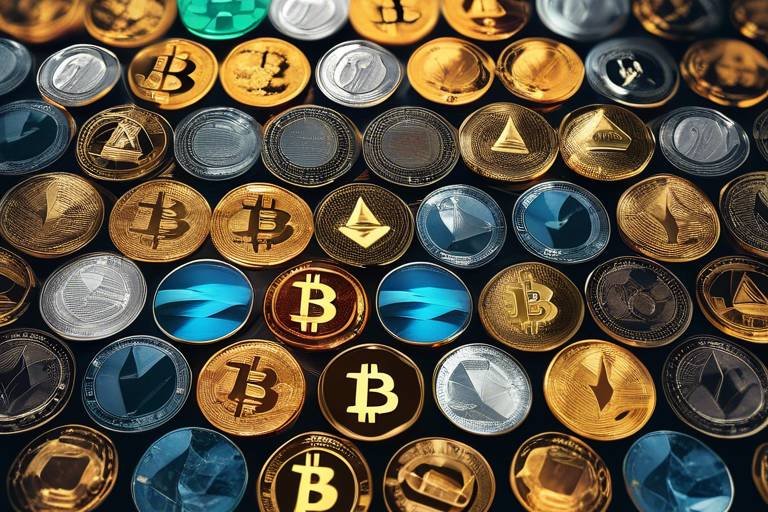The Future of Virtual Reality and Blockchain Integration
The intersection of virtual reality (VR) and blockchain technology is nothing short of thrilling. Imagine stepping into a digital world where every interaction is secured, every asset is uniquely owned, and every transaction is recorded transparently. This is not just a dream; it’s the future of how we will experience the digital landscape. As we delve deeper into this article, we will explore the potential applications, benefits, and challenges that arise from merging these two groundbreaking technologies, creating immersive and secure digital experiences that could redefine how we engage with the virtual world.
Virtual reality has come a long way from its early days of clunky headsets and limited applications. Today, VR offers immersive experiences that transport users to entirely different realms. Whether it’s gaming, education, or training, the applications of VR are vast and continually expanding. For instance, in entertainment, VR allows players to step inside their favorite games, experiencing them in a way that traditional gaming simply cannot match. In education, students can explore historical sites or conduct complex scientific experiments without ever leaving the classroom. This growing popularity is not just a trend; it signifies a shift in how we perceive and interact with technology.
At its core, blockchain technology is about decentralization and security. It provides a robust framework for recording transactions in a way that is transparent and immutable. This means that once a transaction is recorded on the blockchain, it cannot be altered or deleted, creating a level of trust that is often lacking in traditional systems. The key features of blockchain include transparency, security, and decentralization. These features make it an ideal partner for VR, where trust and authenticity are paramount. Imagine a virtual marketplace where you can buy and sell digital assets, knowing that every transaction is secure and verifiable.
The decentralized nature of blockchain ensures that no single entity has control over the data, which is a significant advantage for virtual reality applications. This decentralization not only enhances security but also empowers users, giving them more control over their digital interactions. In a world where data breaches are all too common, the integration of blockchain can provide users with peace of mind, knowing that their information and transactions are safeguarded against unauthorized access.
One of the most exciting aspects of blockchain technology is the concept of smart contracts. These are self-executing contracts with the terms of the agreement directly written into code. In the context of VR, smart contracts can facilitate seamless interactions between users. For example, a user could enter a virtual real estate market, and upon agreeing to the terms of a property sale, the smart contract would automatically execute the transaction without the need for intermediaries. This not only speeds up the process but also reduces costs and enhances security.
Tokenization is another revolutionary aspect of blockchain that can transform VR. It allows for the creation of unique digital assets on the blockchain, meaning that virtual goods can be owned, traded, and sold just like physical assets. This is particularly relevant in the gaming industry, where players often invest significant time and money into acquiring virtual items. With tokenization, users can truly own their in-game assets, giving them the ability to trade or sell these items in a secure and transparent manner. Imagine a world where your virtual sword or rare collectible can be sold for real-world currency!
While the potential for integrating VR and blockchain is immense, there are also significant challenges to overcome. Technical hurdles, such as ensuring compatibility between platforms, must be addressed. Additionally, regulatory concerns regarding digital assets and transactions can complicate the landscape. Lastly, user adoption is crucial; if users are not willing to embrace these new technologies, the integration will struggle to gain traction. Overcoming these challenges will require collaboration between developers, regulators, and users to create a seamless experience.
The gaming industry is poised to reap the most significant benefits from the integration of VR and blockchain. With the ability to create decentralized gaming ecosystems, players can enjoy a level of ownership and engagement that has never been seen before. Imagine a game where every character, weapon, and piece of land is a unique digital asset that players can buy, sell, or trade. This not only enhances the gaming experience but also opens up new revenue streams for developers and players alike.
Integrating blockchain into VR can drastically enhance user experiences. By providing secure transactions and ownership verification, players can engage more fully with the virtual world. No longer will they have to worry about the authenticity of their purchases or the security of their data. This level of trust can lead to increased player engagement and satisfaction, ultimately resulting in a more vibrant gaming community.
Blockchain can also foster community-building in virtual spaces. Decentralized networks can enhance social interactions, allowing players to form connections based on shared interests and experiences. Imagine a virtual world where players can collaborate on projects, trade assets, or participate in community events, all while knowing that their interactions are secure and transparent. This can lead to the creation of vibrant communities within virtual reality environments, enriching the overall experience.
As both VR and blockchain technologies continue to evolve, their integration promises to reshape our digital experiences. We can expect to see innovative trends and applications emerge from this powerful combination, paving the way for a new era of immersive and secure digital interactions. The future is bright, and the possibilities are endless!
- What is the main benefit of integrating VR and blockchain? The integration allows for secure transactions, ownership verification, and enhanced user experiences in virtual environments.
- How can smart contracts be used in VR? Smart contracts can automate transactions and agreements in virtual environments, facilitating seamless interactions between users.
- What challenges exist in merging these technologies? Technical hurdles, regulatory concerns, and user adoption are significant challenges that need to be addressed for successful integration.
- What role does tokenization play in VR? Tokenization allows for the creation of unique digital assets that can be owned, traded, and sold, revolutionizing the concept of ownership in virtual worlds.
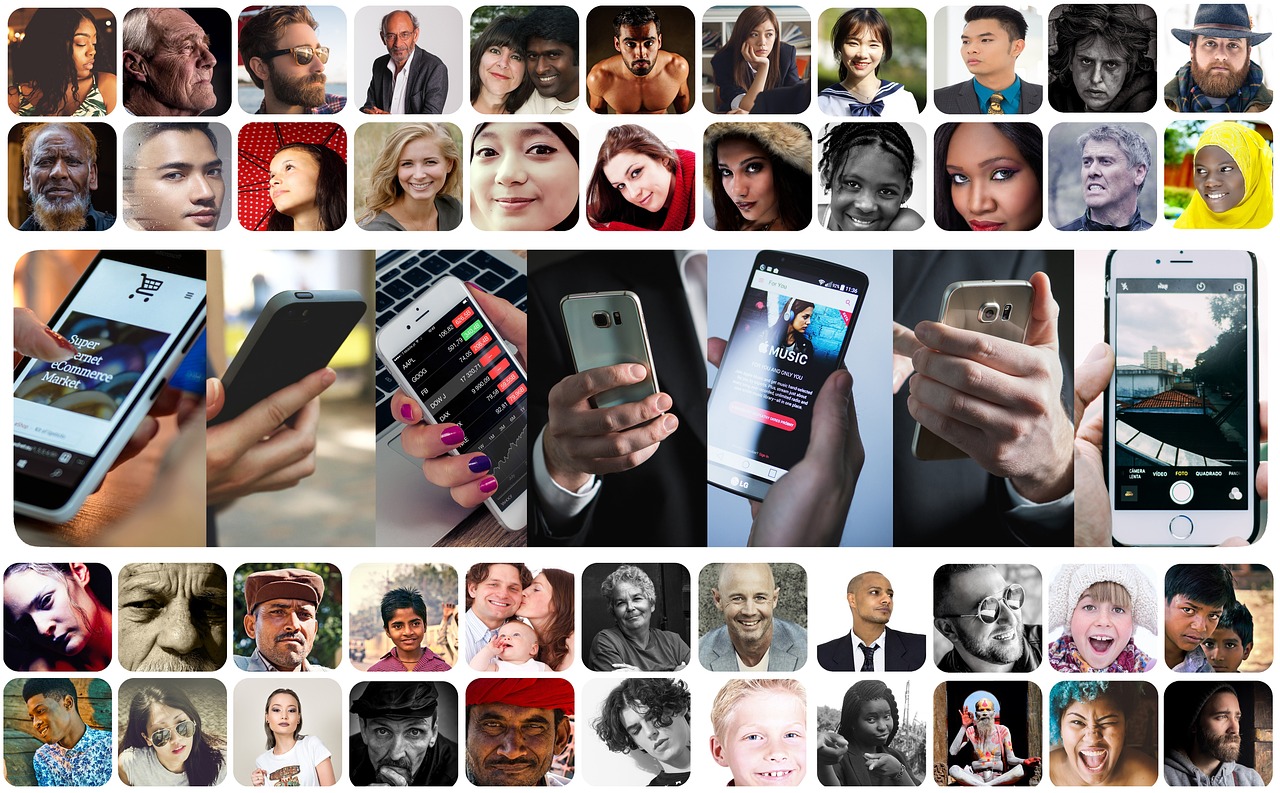
The Rise of Virtual Reality
Virtual reality (VR) has taken the world by storm, evolving from a niche technology into a mainstream phenomenon that captivates millions. The journey of VR has been nothing short of remarkable, transforming how we interact with digital content and offering immersive experiences that were once confined to the realms of science fiction. Today, VR is not just about gaming; it has permeated various sectors, including entertainment, education, and training. Imagine stepping into a virtual classroom where you can explore ancient civilizations or a training simulation that prepares you for real-world challenges. This is the magic of VR!
The current state of VR technology is characterized by advanced hardware and software that create lifelike environments. With the advent of affordable VR headsets like the Oculus Quest and HTC Vive, more people can experience the thrill of virtual worlds without breaking the bank. The graphics are stunning, and the interactivity is seamless, making users feel as though they are truly part of the action. In fact, the global VR market is projected to reach $57.55 billion by 2027, according to recent industry reports. This explosive growth is a testament to the increasing demand for immersive experiences.
One of the most exciting aspects of VR is its application in education. Schools and universities are beginning to integrate VR into their curricula, allowing students to engage with subjects in a way that textbooks simply can't match. For instance, a history lesson can become a journey through time, where students can walk the streets of ancient Rome or witness the signing of the Declaration of Independence. This hands-on approach not only enhances learning but also caters to different learning styles, making education more inclusive.
Moreover, VR is revolutionizing training programs across various industries. From medical professionals practicing surgeries in a risk-free environment to pilots honing their skills in flight simulators, the possibilities are endless. Companies are investing in VR training modules to improve employee performance and safety, resulting in significant cost savings in the long run. The immersive nature of VR allows trainees to experience real-life scenarios without the associated risks, making it an invaluable tool in today’s fast-paced world.
As we delve deeper into the rise of virtual reality, it’s essential to recognize the role of community and social interaction. Platforms like VRChat and Rec Room are creating spaces where users can meet, socialize, and collaborate in virtual environments. This social aspect is crucial, as it fosters a sense of belonging and community among users, making VR not just a solitary experience but a shared adventure. The potential for social engagement in VR is immense, allowing people from different parts of the world to connect and collaborate in ways that were previously unimaginable.
In conclusion, the rise of virtual reality is reshaping our digital landscape, offering immersive experiences that enhance learning, training, and social interaction. As technology continues to advance, we can only imagine the future possibilities that VR will bring, making our digital lives more engaging and connected than ever before.
- What is virtual reality?
Virtual reality is a technology that creates a simulated environment, allowing users to immerse themselves in a 3D space and interact with it using specialized equipment like VR headsets and controllers. - How is VR used in education?
VR is used in education to create interactive learning experiences, allowing students to explore subjects in a more engaging way, such as virtual field trips or simulations of historical events. - What are the benefits of VR training?
VR training provides a safe environment for learners to practice skills without real-world risks, enhances engagement, and can be customized to meet specific training needs. - Can VR be used for social interaction?
Yes, VR platforms allow users to socialize and collaborate in virtual spaces, creating a sense of community and connection among users from different locations.
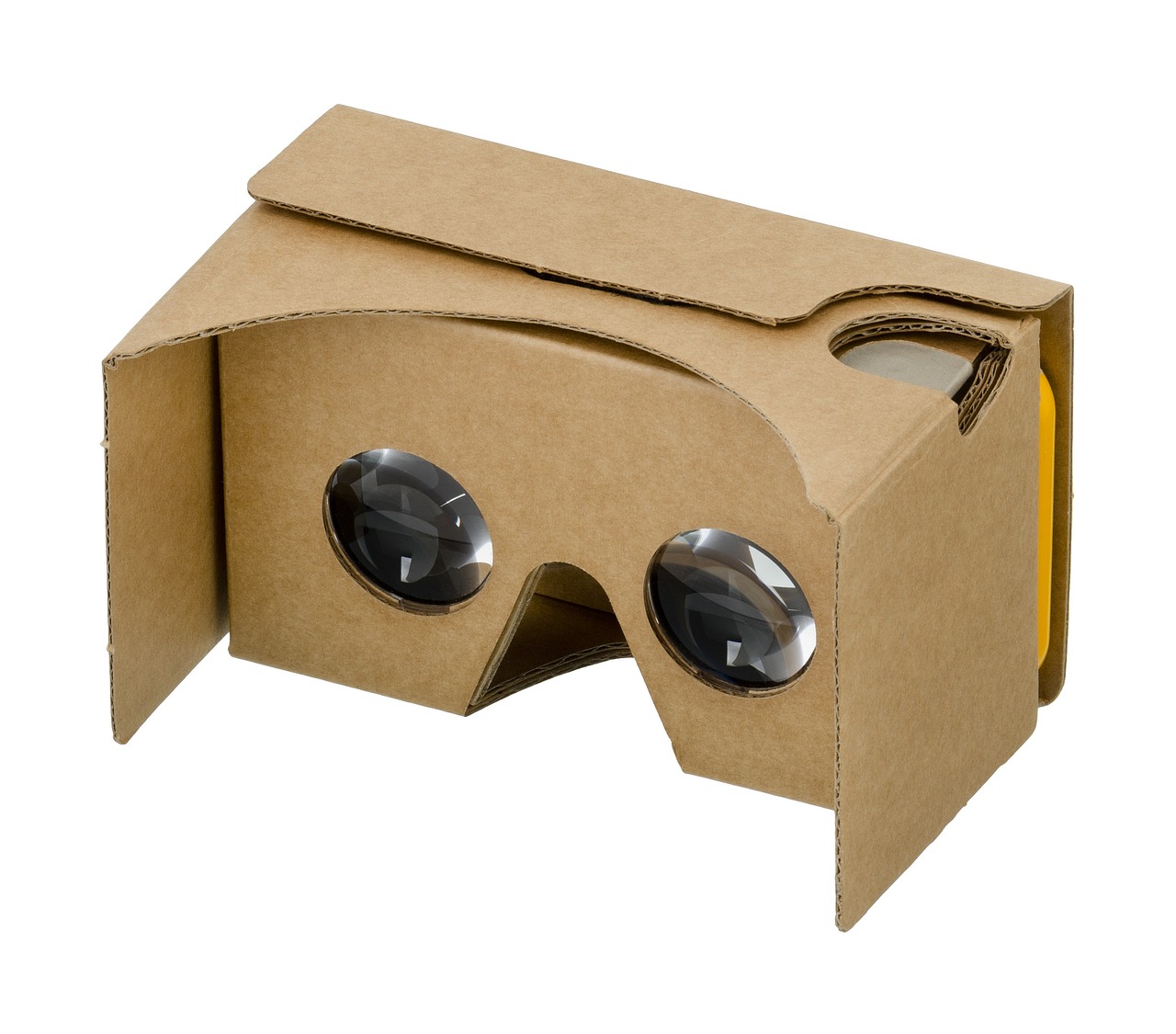
Understanding Blockchain Technology
Blockchain technology has emerged as a revolutionary force in the digital landscape, providing a decentralized and secure way to record transactions. At its core, blockchain is a distributed ledger that allows multiple parties to maintain a shared database without the need for a central authority. Think of it as a digital notebook that everyone can see and write in, but where no one can erase what has already been written. This transparency is one of the key features that sets blockchain apart from traditional databases.
One of the fundamental principles of blockchain is its decentralization. Unlike traditional systems where a single entity, such as a bank or a government, controls the data, blockchain distributes this control across a network of computers, known as nodes. Each node has a copy of the entire blockchain, making it nearly impossible for any single entity to manipulate the data. This decentralization not only enhances security but also builds trust among users, as they can independently verify transactions without relying on a third party.
Another critical feature of blockchain is its immutability. Once a transaction is recorded on the blockchain, it cannot be altered or deleted. This characteristic is akin to carving a message into stone; once it's there, it's permanent. This immutability is achieved through cryptographic hashing, where each block in the chain is linked to the previous block, forming a secure and unchangeable chain of data. As a result, users can have confidence in the integrity of the information stored on the blockchain.
To better understand how blockchain works, let’s break down its key components:
- Blocks: Each block contains a list of transactions, a timestamp, and a unique hash that links it to the previous block.
- Nodes: These are the computers that participate in the blockchain network, validating and recording transactions.
- Consensus Mechanism: This is the process by which the network agrees on the validity of transactions. Common methods include Proof of Work (PoW) and Proof of Stake (PoS).
The combination of decentralization, immutability, and transparency creates a robust framework for digital interactions. In the context of virtual reality, these features can significantly enhance trust and security. For instance, users can confidently trade virtual assets, knowing that their ownership is verified and secure. Additionally, blockchain can facilitate seamless transactions in VR environments, allowing users to buy, sell, or trade items without the fear of fraud or manipulation.
However, while the potential of blockchain is immense, it’s also essential to recognize the challenges it presents. Issues such as scalability, energy consumption, and regulatory concerns need to be addressed to fully realize the benefits of blockchain technology. As we continue to explore the integration of blockchain with virtual reality, understanding these challenges will be crucial in paving the way for innovative solutions that enhance user experiences.

Decentralization and Security
Decentralization is more than just a buzzword in the tech world; it's a revolutionary concept that fundamentally changes how we interact with digital environments. In the realm of virtual reality (VR), integrating blockchain technology offers a new layer of security that enhances user trust and experience. Imagine a world where your virtual assets, whether they are digital art, in-game items, or even virtual real estate, are securely owned and verified without the need for a central authority. This is the promise of decentralization.
At its core, decentralization means that no single entity has control over the entire system. Instead, data is distributed across a network of computers, making it nearly impossible for any one person or organization to manipulate or corrupt the information. This model not only protects against fraud but also empowers users by giving them full ownership of their assets. In the context of VR, this is crucial. Users can confidently engage in transactions, knowing that their purchases and interactions are securely recorded on the blockchain.
One of the standout features of blockchain that enhances security is its immutable ledger. Once a transaction is recorded, it cannot be altered or deleted, creating a permanent record that can be audited at any time. This level of transparency is particularly beneficial in virtual environments where trust is paramount. For instance, consider a virtual marketplace where users buy and sell digital goods. With blockchain, every transaction is traceable, providing a clear history of ownership and authenticity, which is essential for preventing fraud and ensuring fair play.
Moreover, the decentralized nature of blockchain minimizes the risk of data breaches. Traditional centralized systems are vulnerable to attacks, where hackers target a single point of failure. In contrast, a decentralized system spreads the risk across multiple nodes, making it significantly harder for malicious actors to compromise the entire network. This is especially important in VR applications where personal data and financial transactions are involved.
In summary, the integration of decentralization and security through blockchain technology not only enhances user trust in virtual reality but also creates a more robust ecosystem for digital interactions. As we move forward, it’s clear that these principles will be essential in shaping the future of immersive experiences. The combination of a secure, decentralized framework with the engaging nature of VR could lead to groundbreaking innovations that redefine how we perceive ownership and interaction in the digital space.
- What is decentralization? Decentralization refers to the distribution of authority and control away from a central entity, allowing multiple participants to have equal power over a system.
- How does blockchain enhance security? Blockchain enhances security through its immutable ledger, which ensures that once a transaction is recorded, it cannot be altered, thus preventing fraud.
- Why is decentralization important in virtual reality? Decentralization is important in virtual reality because it fosters trust, allows users to own their digital assets, and protects against data breaches.
- Can blockchain be integrated into existing VR platforms? Yes, many existing VR platforms are exploring ways to integrate blockchain technology to enhance security and user experience.
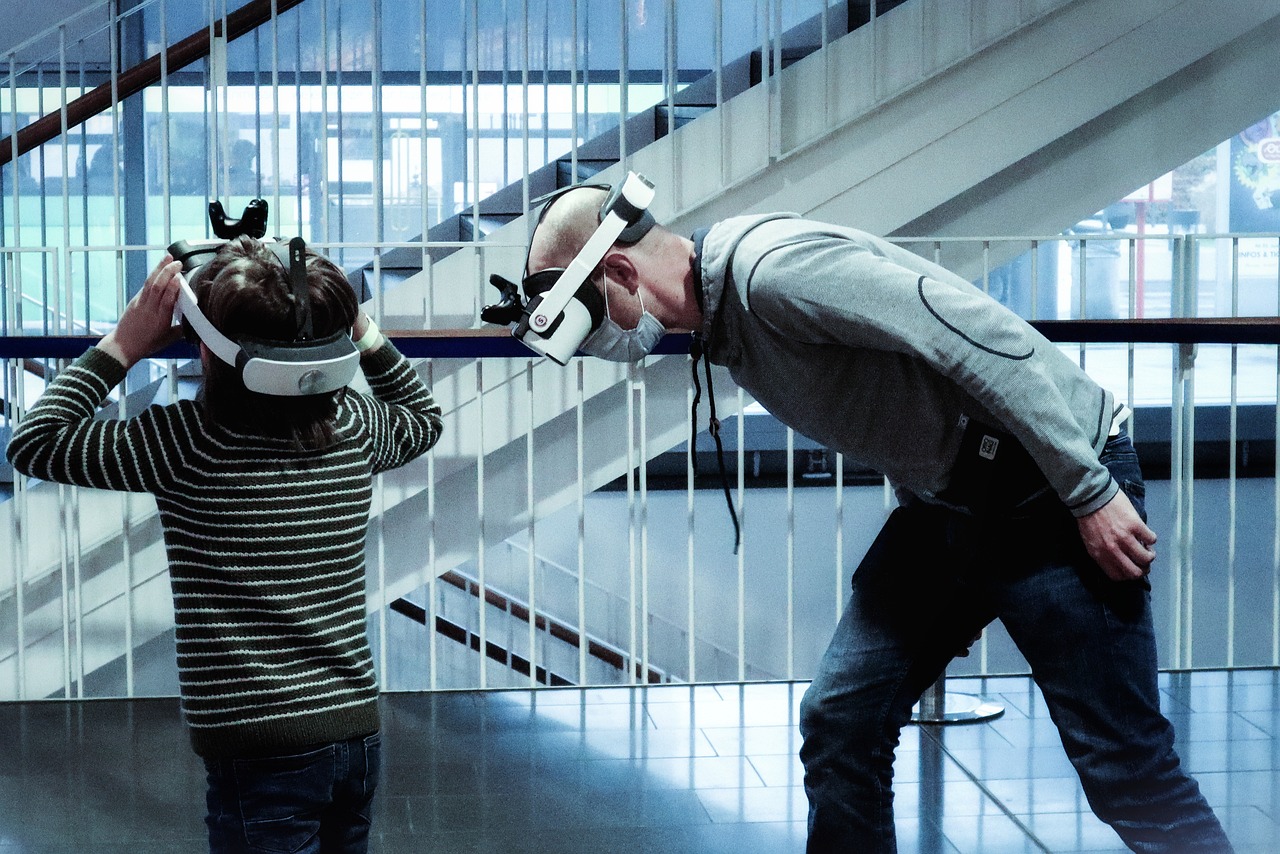
Smart Contracts in VR
Imagine stepping into a virtual world where every transaction is not just a handshake but a legally binding agreement, executed automatically without the need for a middleman. Smart contracts are revolutionizing the way we interact in virtual reality (VR) environments by automating processes and ensuring that agreements are honored. These self-executing contracts, written in code and stored on the blockchain, enable seamless interactions in VR, making experiences more immersive and trustworthy.
In the realm of virtual reality, smart contracts can facilitate a variety of transactions, from purchasing virtual real estate to buying exclusive in-game items. For instance, when a player decides to buy a rare sword in a VR game, a smart contract can automatically verify the transaction, transfer ownership, and update the player's inventory—all without human intervention. This not only speeds up the process but also minimizes the chances of fraud, as the blockchain ledger keeps a transparent record of all transactions.
Moreover, smart contracts can enhance user agreements in VR by providing clear terms and conditions. Players can enter into agreements for renting virtual spaces, sharing resources, or even collaborating on projects. Here’s how it works:
- Automated Execution: Once the conditions are met, the contract executes automatically.
- Transparency: All parties can see the contract terms, ensuring everyone is on the same page.
- Security: The decentralized nature of blockchain means that contracts are tamper-proof and securely stored.
One of the most exciting aspects of smart contracts in VR is their ability to create decentralized marketplaces. Imagine a virtual bazaar where users can buy, sell, and trade digital assets without relying on a central authority. Smart contracts can govern these transactions, ensuring that sellers receive their payment immediately upon completion of the sale, while buyers can be confident that they are receiving genuine items. This opens up a world of possibilities for creators and gamers alike, allowing them to monetize their virtual creations in a secure and efficient manner.
However, the integration of smart contracts in VR isn't without its challenges. Developers must ensure that the contracts are coded correctly to avoid vulnerabilities that could be exploited. Additionally, user education is crucial; many individuals are still unfamiliar with how blockchain and smart contracts function. As these technologies advance, it's essential to bridge the knowledge gap to fully harness their potential in virtual reality.
In summary, smart contracts represent a transformative force in the world of virtual reality. By automating transactions and enhancing trust among users, they pave the way for more engaging and secure digital experiences. As we continue to explore the intersection of VR and blockchain, the possibilities for innovation are limited only by our imagination.
- What are smart contracts? Smart contracts are self-executing contracts with the terms of the agreement directly written into code, stored on a blockchain.
- How do smart contracts work in VR? They automate transactions and agreements in virtual environments, ensuring that all parties adhere to the terms without needing intermediaries.
- What are the benefits of using smart contracts in virtual reality? Benefits include automated execution, enhanced security, transparency in transactions, and the ability to create decentralized marketplaces.
- What challenges do smart contracts face in VR? Challenges include potential coding errors, user education, and the need for robust security measures to protect against vulnerabilities.
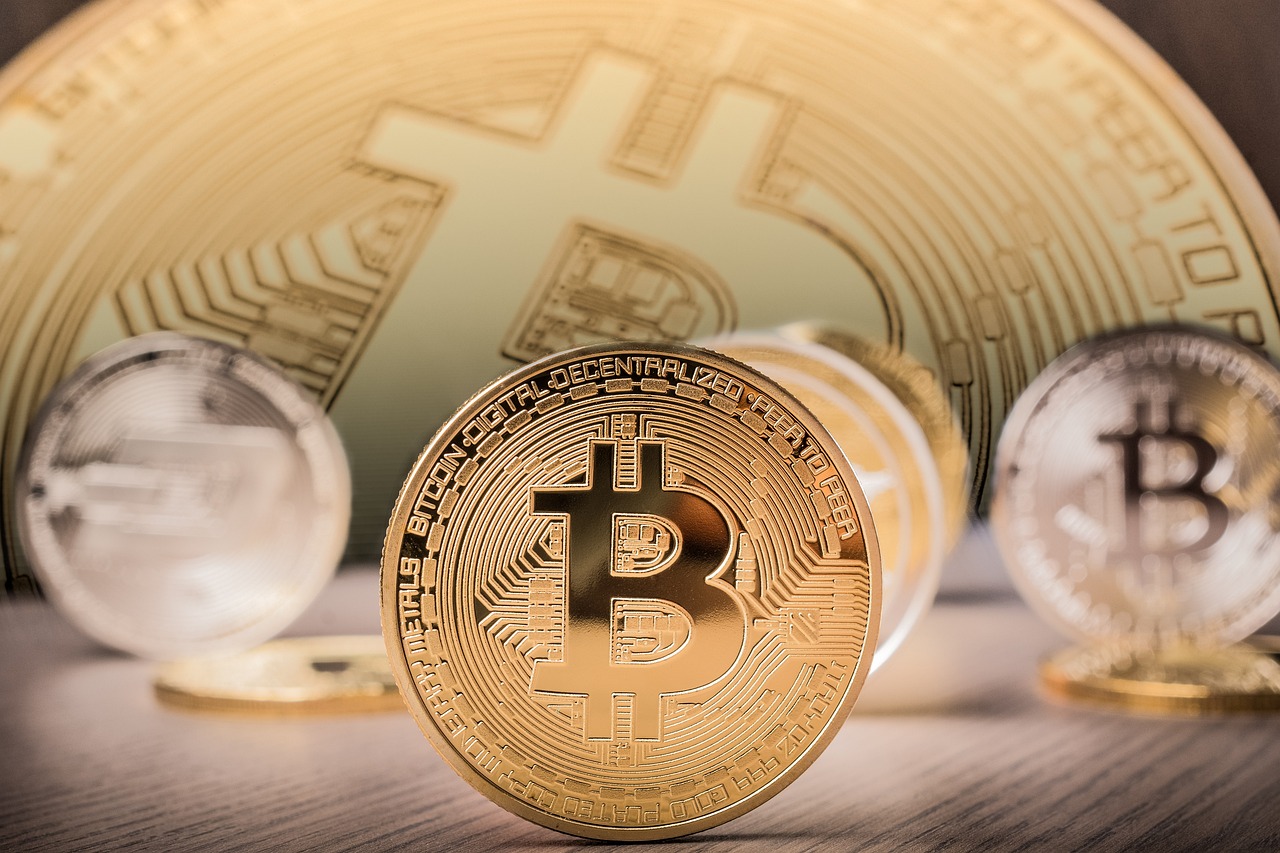
Tokenization of Virtual Assets
Tokenization is a groundbreaking concept that is revolutionizing how we perceive ownership in the digital realm. Imagine owning a piece of virtual land or a unique in-game item that is verifiably yours, not just a fleeting digital file. This is where blockchain technology comes into play, allowing for the creation of unique digital assets that can be bought, sold, and traded with complete transparency. By representing these assets as tokens on a blockchain, we can ensure that each item has a distinct identity, which is crucial in virtual environments where scarcity and authenticity matter.
In gaming, for example, tokenization enables players to truly own their in-game assets. No longer are they just renters of digital items; they can buy, sell, or trade their virtual goods freely, just like physical assets in the real world. This shift changes the dynamics of gaming economies, where players can invest in their passion and potentially profit from their investments. Picture this: you spend hours leveling up a character and acquiring rare items, and now you can sell those items for cryptocurrency or even real money. This not only enhances the gaming experience but also creates a vibrant marketplace for virtual assets.
Moreover, tokenization can lead to the development of decentralized marketplaces, where players can interact directly without intermediaries. This means lower fees and more control over transactions, which is a win-win for gamers. However, it's essential to understand that with great power comes great responsibility. Players must be educated about the risks involved in trading virtual assets, such as market volatility and the potential for scams.
To illustrate the impact of tokenization, consider the following table that highlights key benefits:
| Benefit | Description |
|---|---|
| True Ownership | Players can own and trade their digital assets as they would physical items. |
| Market Liquidity | Tokenization creates a marketplace for players to buy and sell assets easily. |
| Transparency | Blockchain ensures all transactions are recorded, reducing fraud. |
| Interoperability | Tokens can be used across different platforms and games, enhancing user experience. |
As we look to the future, the tokenization of virtual assets is set to redefine not only the gaming industry but also other sectors such as real estate, art, and fashion. Imagine purchasing a digital artwork that is verifiably yours, or investing in virtual real estate that can appreciate in value. The possibilities are endless, and as technology continues to evolve, so too will the ways we interact with our digital possessions.
In conclusion, tokenization is not just a buzzword; it's a paradigm shift that empowers users, fosters creativity, and enhances engagement in virtual environments. As we embrace this new era, the potential for innovation is limited only by our imagination.
- What is tokenization? Tokenization is the process of converting ownership rights of an asset into a digital token on a blockchain.
- How does tokenization benefit gamers? It allows gamers to own, trade, and sell their in-game assets, creating real value from their virtual experiences.
- Are there risks involved in trading virtual assets? Yes, risks include market volatility, potential scams, and the need for users to be educated about secure trading practices.
- Can tokenized assets be used across different platforms? Yes, one of the advantages of tokenization is interoperability, allowing tokens to be used in various applications and games.

Challenges of Integration
While the integration of virtual reality (VR) and blockchain technology presents a thrilling frontier for digital experiences, it is not without its challenges. Many obstacles stand in the way of fully realizing this potential, and understanding these hurdles is crucial for developers, businesses, and users alike. One of the primary challenges is the technical complexity involved in merging these two advanced technologies. VR requires substantial processing power and low latency to create immersive experiences, while blockchain transactions can be slow and resource-intensive. This disparity can lead to frustrating user experiences if not addressed properly.
Moreover, there are significant regulatory hurdles that need to be navigated. The blockchain landscape is still evolving, with various governments and regulatory bodies attempting to catch up with the rapid technological advancements. This uncertainty can create a chilling effect on innovation, as companies may hesitate to invest in integrating VR and blockchain due to fears of future legal complications. Additionally, the lack of standardized regulations across different regions complicates the situation further, making it challenging for developers to create universally compliant solutions.
User adoption is another critical factor to consider. While both VR and blockchain have garnered interest, the average consumer may still be unfamiliar with how these technologies work individually, let alone when integrated. This lack of understanding can lead to skepticism and reluctance to embrace new platforms that utilize both technologies. To overcome this, education and outreach are essential. Developers and companies must work to demystify these technologies and demonstrate their benefits in a relatable way.
Lastly, we must not overlook the issue of interoperability. For VR and blockchain to work seamlessly together, they need to communicate efficiently. This means creating systems that can interact with various blockchain networks and VR platforms. Currently, many blockchain solutions are siloed, meaning they operate independently without the ability to share data or assets across platforms. This fragmentation can limit the potential for creating a cohesive user experience in virtual environments.
In summary, while the integration of VR and blockchain offers exciting possibilities, it also presents several challenges that must be addressed. Developers, regulators, and users must work together to navigate these issues, paving the way for a future where immersive digital experiences are both secure and accessible.
- What are the main challenges of integrating VR and blockchain? The main challenges include technical complexity, regulatory hurdles, user adoption issues, and interoperability concerns.
- How can user education help in overcoming integration challenges? Educating users about the benefits and functionalities of both technologies can foster trust and encourage adoption, making them more willing to engage with integrated platforms.
- Why is interoperability important in VR and blockchain integration? Interoperability allows different platforms to communicate and share data, creating a seamless user experience and enhancing the overall functionality of virtual environments.
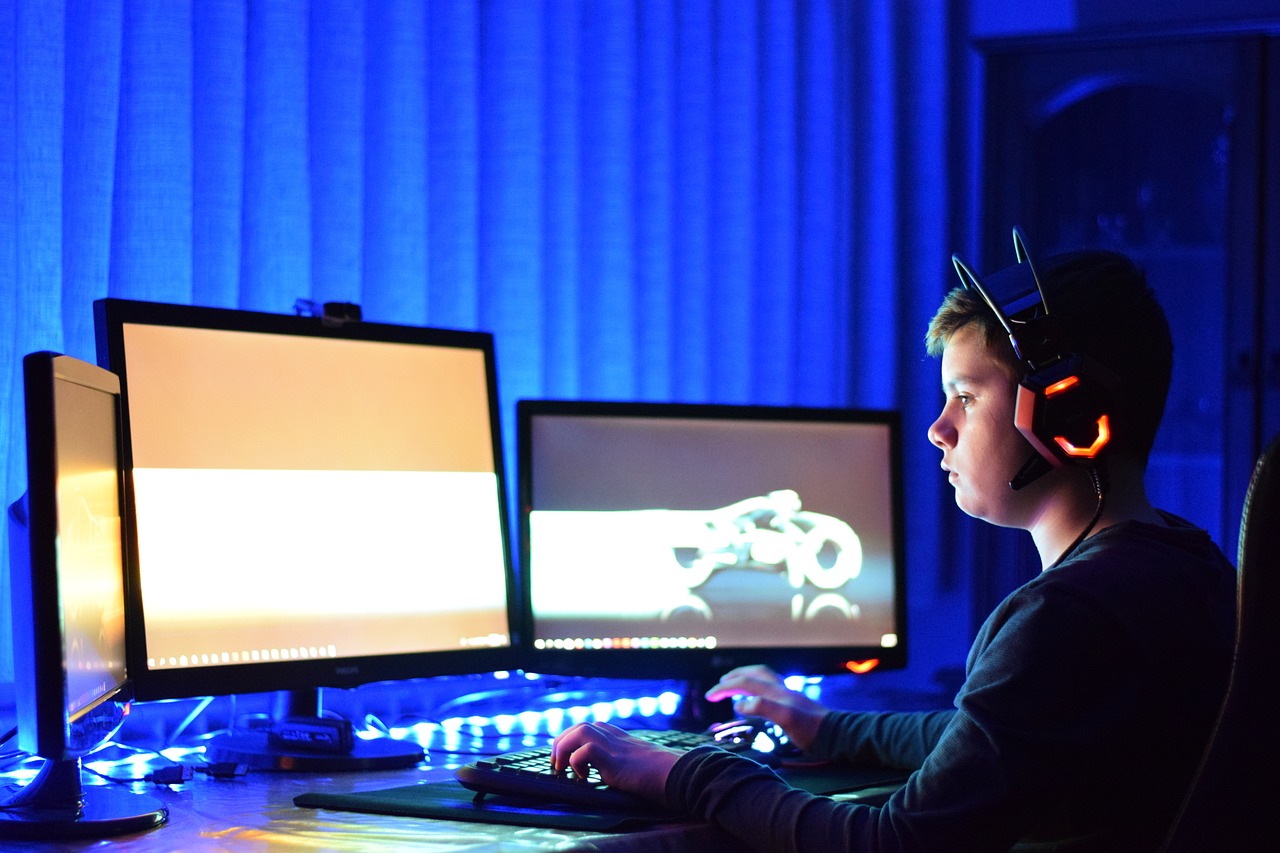
Potential Applications in Gaming
The gaming industry stands on the brink of a revolution, fueled by the incredible synergy between virtual reality (VR) and blockchain technology. Imagine stepping into a digital world where not only are the visuals immersive, but every item you acquire, every achievement you unlock, and every interaction you make is securely recorded on a blockchain. This integration can transform the way we play, own, and interact within games, creating an experience that is not just entertaining but also empowering.
One of the most exciting potential applications lies in the realm of player ownership. Traditionally, gamers have invested countless hours and money into their favorite titles, only to find that their in-game assets are often not truly theirs. With blockchain, players can own unique digital assets, such as skins, weapons, or even entire characters, represented as non-fungible tokens (NFTs). This means that players can buy, sell, or trade their assets freely, creating a real economy within the game. For instance, a rare sword in a fantasy RPG could be sold for cryptocurrency, providing players with tangible value for their time and effort.
Moreover, the concept of decentralized gaming ecosystems is becoming increasingly feasible. Picture a gaming universe where developers and players collaboratively shape the game’s environment and rules. Blockchain can facilitate this by allowing for community-driven governance, where players vote on changes and updates. This not only enhances player engagement but also fosters a sense of belonging and community, as everyone has a stake in the game’s evolution.
Another fascinating aspect of integrating blockchain with VR in gaming is the potential for innovative game designs. Developers can create games that reward players for their achievements in unique ways, such as distributing tokens for completing quests or challenges. These tokens could then be used for in-game purchases or even exchanged for real-world currency. The possibilities are endless, and this shift could lead to a new wave of creativity in game development.
In addition to enhancing ownership and community, blockchain can also improve security and transparency in gaming. Imagine a scenario where cheating or fraud is significantly reduced because every action is recorded on an immutable ledger. Players can trust that the achievements they earn are legitimate and that the in-game economy is fair. This level of transparency can lead to a more enjoyable gaming experience, where players feel confident in their investments—both time and money.
To summarize the potential applications of VR and blockchain in gaming, we can highlight several key areas:
- Player Ownership: True ownership of in-game assets through NFTs.
- Decentralized Ecosystems: Community-driven governance and game evolution.
- Innovative Game Designs: Reward systems that integrate real-world value.
- Security and Transparency: Reduced cheating and enhanced trust in game mechanics.
As we look to the future, it’s clear that the integration of VR and blockchain in gaming is not just a passing trend; it represents a fundamental shift in how we perceive and interact with digital worlds. The potential for immersive experiences, coupled with secure transactions and true ownership, could redefine the gaming landscape, making it more engaging, rewarding, and community-oriented.
Q: How does blockchain ensure player ownership in games?
A: Blockchain technology allows players to own unique digital assets as non-fungible tokens (NFTs), which can be bought, sold, or traded independently of the game.
Q: What are the benefits of decentralized gaming ecosystems?
A: Decentralized ecosystems empower players to participate in governance, shaping the game's future collaboratively, which enhances engagement and community involvement.
Q: Can blockchain prevent cheating in games?
A: Yes, by recording every action on an immutable ledger, blockchain increases transparency and trust, making it harder for players to cheat or manipulate game mechanics.

User Experience Enhancement
Imagine stepping into a virtual world where every interaction feels genuine and secure. With the integration of blockchain technology into virtual reality (VR), this dream is becoming a reality. The enhancement of user experience in VR through blockchain is not just about flashy graphics or immersive sound; it’s about creating a trustworthy environment where users can engage without fear of fraud or data breaches. So, how does this work?
First off, blockchain provides a secure transaction framework. When users buy virtual goods, such as skins for their avatars or digital real estate in a virtual world, they can do so with confidence knowing that their transactions are recorded on an immutable ledger. This transparency eliminates the risk of double spending and ensures that users truly own their assets. Imagine purchasing a rare digital sword in a game, and you can see the entire history of ownership right there on the blockchain. This level of transparency is a game-changer.
Furthermore, blockchain enhances user experience by implementing ownership verification. In traditional VR environments, users often face challenges in proving ownership of digital assets, which can lead to disputes and confusion. With blockchain, each asset is represented by a unique token, allowing users to verify their ownership seamlessly. This is particularly appealing in gaming, where players invest time and money into acquiring unique items. The ability to prove ownership not only boosts user confidence but also fosters a sense of belonging and pride in their virtual possessions.
Additionally, the integration of blockchain can facilitate decentralized marketplaces within VR. These marketplaces allow users to buy, sell, or trade their virtual goods directly with each other, without the need for a central authority. This peer-to-peer interaction not only reduces transaction fees but also enhances the overall experience by creating a vibrant economy where users feel more engaged. Imagine being able to trade your digital collectibles with friends in real-time, all while knowing that every transaction is secure and verifiable.
Moreover, the use of smart contracts in VR can automate complex transactions, making interactions smoother and more efficient. For instance, if two players agree to trade items, a smart contract can automatically execute the trade once both parties fulfill their obligations. This removes the need for manual intervention and reduces the chances of disputes, leading to a more enjoyable and hassle-free experience for users.
In conclusion, the enhancement of user experience in virtual reality through blockchain integration is not just a theoretical concept; it is a practical application that can transform how we interact in digital spaces. By ensuring secure transactions, verifying ownership, and facilitating decentralized marketplaces, blockchain makes the virtual experience more engaging and trustworthy. As we continue to explore the potential of these technologies, the possibilities for creating immersive and secure digital experiences are truly limitless.
- What is the main benefit of integrating blockchain with VR?
The main benefit is enhanced security and trust in transactions, allowing users to engage in virtual environments without fear of fraud.
- How does blockchain improve ownership verification in VR?
Blockchain allows for unique tokens to represent digital assets, making it easy for users to verify and prove ownership.
- Can blockchain create decentralized marketplaces?
Yes, blockchain enables peer-to-peer transactions, allowing users to buy, sell, or trade virtual goods without a central authority.

Community and Social Interaction
Imagine stepping into a virtual world where you can not only explore breathtaking landscapes but also connect with people from all over the globe. The integration of blockchain technology into virtual reality (VR) has the potential to transform how we interact socially in these immersive environments. By leveraging decentralized networks, we can foster vibrant communities that thrive on collaboration, creativity, and shared experiences.
One of the most exciting aspects of this integration is the way it enhances trust and transparency in social interactions. In traditional online platforms, users often grapple with concerns over data privacy and ownership. However, with blockchain, every interaction can be securely logged, ensuring that users have control over their data. This creates a foundation of trust, allowing individuals to engage more freely and authentically within VR spaces.
Moreover, the concept of decentralized identities is gaining traction. Users can create unique digital identities that are verifiable on the blockchain, empowering them to interact with others without fear of impersonation or fraud. This not only enriches the social experience but also encourages users to participate actively in community-building efforts. After all, who wouldn’t want to join a community where their identity is secure and respected?
In these virtual environments, users can engage in various activities that strengthen community bonds. From collaborative projects and events to social gatherings and gaming competitions, the possibilities are endless. Here are a few ways blockchain can enhance community and social interaction in VR:
- Decentralized Governance: Communities can self-govern through decentralized decision-making processes, allowing members to vote on changes or features.
- Shared Economies: Users can trade virtual goods and services securely, fostering a sense of ownership and investment in the community.
- Incentivized Participation: Blockchain can reward users for their contributions, whether through content creation, moderation, or community support.
As we move forward, the potential for community engagement in virtual reality will only grow. We envision a future where virtual spaces become hubs of social interaction, creativity, and collaboration, bridging geographical divides and bringing people together in ways we’ve never seen before. Whether it’s attending a virtual concert, collaborating on a project, or simply hanging out with friends in a digital café, the possibilities are as limitless as our imagination.
In conclusion, the synergy between blockchain and virtual reality is set to redefine how we build and engage with communities. As these technologies continue to evolve, we can expect a more inclusive, transparent, and interactive social landscape that enriches our digital experiences.
- What is the role of blockchain in enhancing community interactions in virtual reality?
Blockchain provides a secure and transparent way to manage identities and transactions, fostering trust among users. - How does decentralized identity work?
Decentralized identity allows users to create verifiable digital identities that are controlled by them, reducing the risk of fraud. - Can users earn rewards for participating in virtual communities?
Yes, blockchain can incentivize user participation by rewarding contributions with tokens or other digital assets.
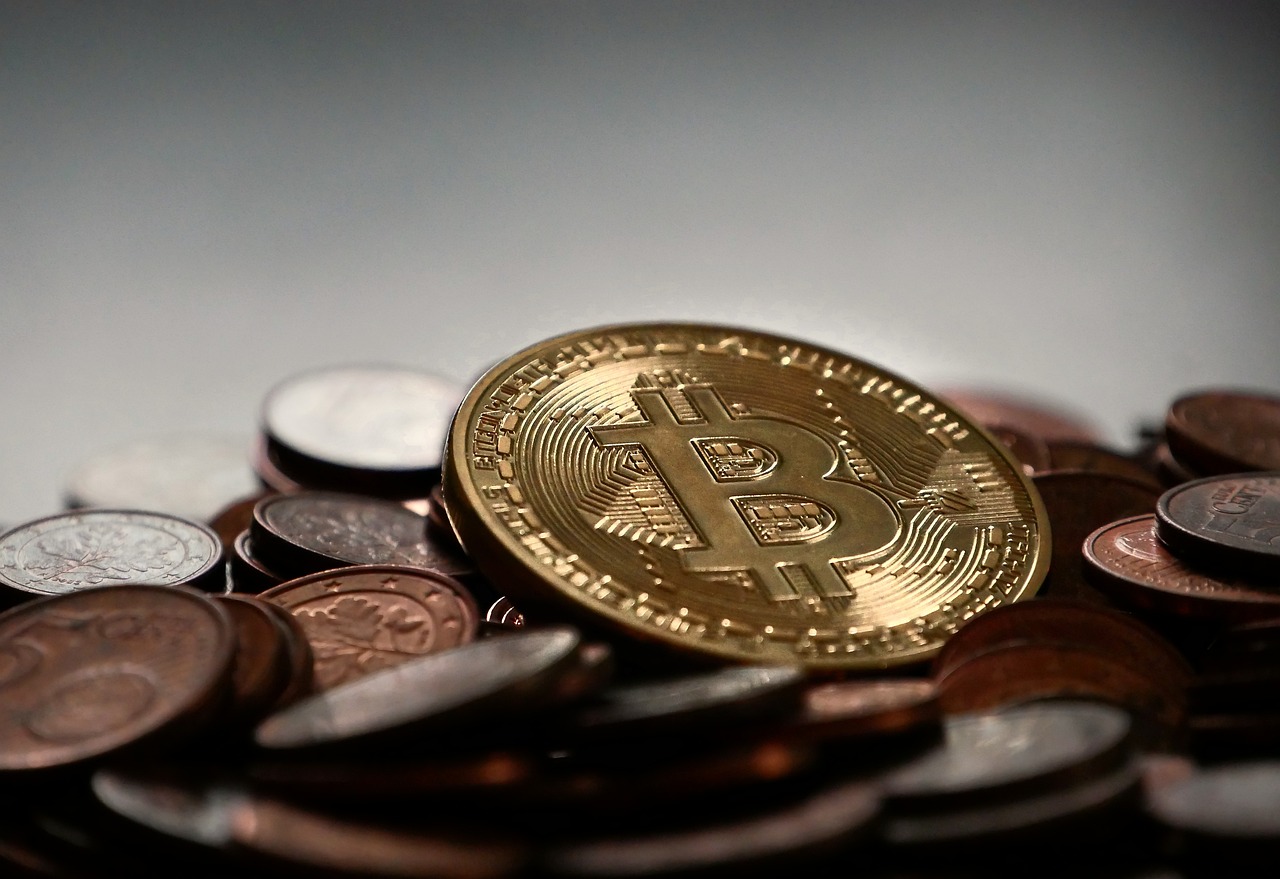
The Future Outlook
The integration of virtual reality (VR) and blockchain technology is not just a fleeting trend; it is poised to redefine how we interact with digital environments. As both technologies continue to advance, we can expect a wave of innovations that will enhance user experiences, increase security, and promote ownership in virtual spaces. Imagine stepping into a virtual world where every item you acquire is genuinely yours, backed by blockchain's irrefutable proof of ownership. This is not science fiction; it’s the future that is rapidly approaching.
One of the most exciting prospects is the emergence of decentralized virtual worlds. These are immersive spaces where users can create, own, and trade their assets without relying on a central authority. This shift will empower creators and players alike, allowing them to monetize their skills and contributions directly. For example, a game developer could design a unique character or environment, tokenize it, and sell it directly to players, eliminating the need for intermediaries. Such a model not only promotes fairness but also fosters a vibrant ecosystem where creativity thrives.
Moreover, the potential for smart contracts in these environments is immense. Smart contracts can automate various processes, from transactions to governance. For instance, a virtual concert could utilize smart contracts to manage ticket sales and artist royalties automatically. This means that artists receive their fair share instantly, without the delays often associated with traditional payment systems. As we move forward, the ability to create seamless and secure interactions will be a game-changer for the entertainment industry.
However, it’s essential to acknowledge the challenges that lie ahead. The technical complexities of integrating VR and blockchain must be addressed, including issues related to scalability and user experience. Additionally, regulatory frameworks will need to adapt to accommodate these new technologies, ensuring that they are safe and accessible to everyone. The success of this integration will heavily depend on widespread user adoption, which means that developers must prioritize creating intuitive interfaces that demystify blockchain for the average user.
As we look to the future, the synergy between VR and blockchain could also lead to the rise of virtual economies. These economies will allow for real-world value to be exchanged within virtual environments, creating opportunities for businesses and entrepreneurs. Just as the internet transformed commerce, the combination of VR and blockchain could create entirely new markets and business models. Picture a virtual marketplace where users can buy, sell, and trade goods and services using cryptocurrencies, all while enjoying an immersive shopping experience.
In summary, the future outlook for the integration of virtual reality and blockchain is not just bright; it is dazzling. The possibilities are endless, and as these technologies continue to evolve, they promise to create a more immersive, secure, and equitable digital landscape. The journey may be fraught with challenges, but the potential rewards make it a venture worth pursuing. Are you ready to step into this new reality?
- What is the main benefit of integrating VR with blockchain?
The primary benefit is enhanced security and ownership verification, allowing users to have true ownership of digital assets in virtual environments.
- How can smart contracts be utilized in virtual reality?
Smart contracts can automate transactions and agreements, facilitating seamless interactions between users and developers in virtual spaces.
- What challenges do VR and blockchain integration face?
Key challenges include technical complexities, regulatory hurdles, and the need for user-friendly interfaces to promote adoption.
- Will virtual economies become a reality?
Yes, as VR and blockchain technologies evolve, we can expect the emergence of virtual economies where real-world value can be exchanged in immersive environments.
Frequently Asked Questions
- What is the relationship between virtual reality and blockchain technology?
Virtual reality (VR) and blockchain technology intersect to create immersive, secure digital experiences. While VR provides a platform for engaging environments, blockchain offers a decentralized and secure way to manage transactions and ownership within those environments, enhancing trust and transparency.
- How can blockchain improve security in virtual reality applications?
Blockchain enhances security in VR applications through its decentralized structure, which prevents any single entity from controlling the data. This means that user interactions and transactions within a VR space are more secure and less susceptible to fraud, leading to a safer user experience.
- What are smart contracts, and how do they function in VR?
Smart contracts are self-executing contracts with the terms of the agreement directly written into code on the blockchain. In VR, they facilitate seamless transactions and agreements between users, automating processes such as payments or asset transfers, thus streamlining interactions in virtual environments.
- What does tokenization mean in the context of virtual reality?
Tokenization in virtual reality refers to the process of creating unique digital assets on the blockchain, allowing users to own, trade, or sell virtual goods securely. This can revolutionize gaming and virtual worlds by providing real ownership and value to digital items.
- What challenges are faced in integrating VR and blockchain?
Integrating VR and blockchain presents several challenges, including technical issues like scalability and interoperability, regulatory hurdles concerning digital assets, and user adoption barriers as people may be hesitant to embrace new technologies. Addressing these challenges is crucial for successful implementation.
- How can the gaming industry benefit from the combination of VR and blockchain?
The gaming industry stands to gain significantly from the synergy of VR and blockchain by enabling innovative game designs that incorporate player ownership of assets, decentralized gaming ecosystems, and enhanced user experiences through secure transactions and ownership verification.
- In what ways can blockchain enhance community interaction in virtual spaces?
Blockchain can foster community-building in virtual environments by creating decentralized networks that enhance social interactions. This allows users to form vibrant communities, share experiences, and collaborate in ways that traditional platforms may not support.
- What does the future hold for the integration of VR and blockchain?
The future of VR and blockchain integration is promising, with potential trends including more sophisticated virtual experiences, greater user empowerment through ownership of digital assets, and the emergence of innovative applications across various sectors. As both technologies evolve, they are likely to reshape digital interactions significantly.

